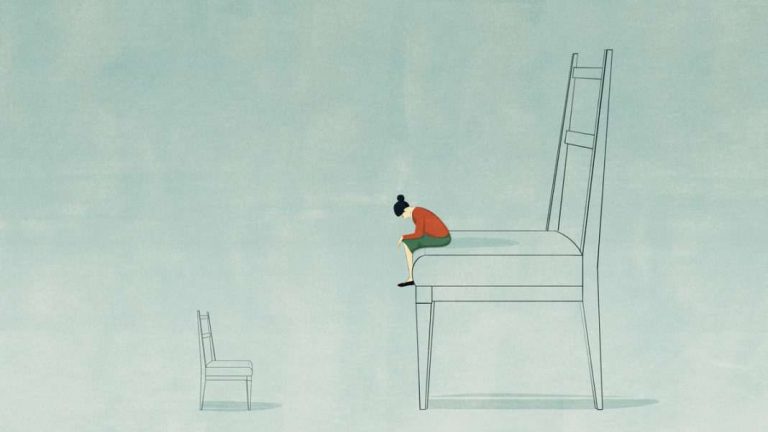
What is grief like for a therapist when a patient commits suicide 26-11-2018
By: Lucy Madox
While Skype interviewing Beth, a social worker based in the United States, she searched her papers for an envelope with the name Toby*, where there was a photograph, a funeral card and some drawings. One of the things on Beth's desk was a stone that, she tells me, Toby liked to have while they were in therapy. Toby had been Beth's patient and had committed suicide seven years ago.
“I'll never forget it,” she says. “It was a Friday.” Toby was a patient in a program for young people with complex mental problems. “He refused to leave my office,” Beth says. “I put my head in my arms and cried as I said ‘make it stop.’”
Toby faced a whole constellation of difficulties. As a baby, he had been adopted by a family with religious principles that he did not share, and he also spent a difficult time in school. He experienced very low moods, had paranoid thoughts, and had overdosed on other occasions. However, he attended the program, took medications, and participated in therapy.
“He was sad,” Beth says. “But he was also funny and sarcastic; he was a skateboarder and he liked rock. He was the cool kid, but he was also extremely vulnerable. He was very lonely. ”
In the weeks leading up to his death, Toby had begun to worry about some unusual explanations for his adoption. “He was trying to understand about being loved, not being loved and being abandoned,” Beth says.
That Friday, Beth had become nervous. “I went to the psychiatrist and said, ‘We either take him to the emergency room or we try to admit him in a hospital,’” he says.
Toby was examined but not admitted that same night. Other team members thought it would be best for Toby to be home, with the option to return if necessary. These kinds of clinical decisions can be unbearable, with the weight of trying to balance certain risks with a person's health and safety. Team members don't always agree on how to proceed, and Beth didn't.
“When his parents came to pick him up, I told them, ‘Toby's had a very hard day, he's not okay, be very careful with him,’” Beth recalls. “I told them, ‘don't hesitate to call or bring him in for emergencies.’ He left and I said, ‘See you soon.’” Beth was on duty that weekend.
“On the first hour of Saturday, I got a call saying, ‘He's in intensive care, are you coming?’” That Friday night, as his family ate downstairs, Toby had gone to the bathroom and shot himself. He survived, but after severe brain damage, they disconnected the life support after a few days.
Although there is not much recent data, it is estimated that half of psychiatrists and one in five psychologists in the United States have experienced the suicide of a patient. Last year there were 5,821 suicides in the UK: 10 deaths per 100,000 people. We know the effects are devastating for family and friends. Much less is known about the reactions of the professionals in charge. What if the person who died was your patient?
The waves of emotions that a suicide can generate spread enormously. “People often believe that the impact only reaches a handful of close relatives,” says Julie Cerel, president of the American Association of Suicidology and a professor at the University of Kentucky. “Actually, our work has found that 135 people are exposed to each suicide; I mean, people who knew the one who died. And about a third of them are deeply impacted. ”
Beth's initial reaction was to turn her life to work, but the emotional consequences were very grave. “I felt terribly sad, upset, and guilty. I remember crying a lot. I felt ashamed I didn't sleep well. Then for about a year she was unable to make decisions… she would ask others for help all the time. I was worried about what I was gonna have for dinner because, what if I made the wrong decision? And it took me a while to realize: this is because I feel like I made the wrong decision even when the decision wasn't just mine. ”
There is a shortage of studies of therapists' reactions to patient suicides, and a big reason for that is reluctance to talk about it. Guilt, shame, and -particularly in the United States- the fear of facing legal action can generate silencing.
“Therapists often feel the same emotions as other people when there are deaths, and they have the added burden of guilt,” Cerel says. “But guilt, which is often similar to the reaction of family members who wish they could have done more, can be interpreted as a confession of not having done enough in a clinical sense and that could lead to litigation. Most health professionals don't feel they can talk openly about their reactions to their patients' suicide. ”
Despite the small number of investigations, there is growing evidence around the mourning of professionals. Jane Tillman, a psychologist at the Austen Riggs Center in Massachusetts, conducted one of the first qualitative studies in the field. She interviewed 12 therapists and found eight common themes in a patient's suicide reactions, including responses to trauma, emotional bereavement reactions, a sense of crisis, effects on peer relationships, and effects on working with other patients.
One of the participants described feeling “extremely traumatized,” recalls Tillman. “He realized that every time the phone rang in the middle of the night or at an unexpected moment, he felt an adrenaline rush. He says that ‘that's not even how I found out about my patient's death, but even after many years I think a patient has committed suicide.’”
More extensive studies show that approximately 40 percent of distressed therapists report a patient's suicide as traumatic. Common reactions include shame, guilt, terror, and a sense of hopelessness, or thinking they were too naive or ambitious to think they could have helped.
Tillman believes that talking is critical; for both students and qualified professionals. “I usually say in workshops, ‘raise your hand if you are supervisors,’” he says. “A lot of people raise their hands. ‘Raise your hand if you have had any training on what to do if any of your subordinates have a patient who has committed suicide.’ No one raises a hand.
“This is not an unexpected and terrible thing that only happens to bad professionals,” Tillman adds. “This is part of being in the field, and we have to find ways to learn about it, so that people don't feel so abandoned. It is not uncommon to be afflicted; it is not a weakness. It's a terrible part of our professional life. ”
Cerel believes that grief after suicide is “similar to grief after other sudden deaths, but differs in that people affected by these deaths feel that there was something they could have done directly to prevent the death. They wonder why for a long time. ”
Beth still thinks about Toby, but she wasn't comfortable talking about him at work. “I don't think I had the right to prosecute him as a personal traumatic death. It was a traumatic professional loss, but it felt very personal. ” For all theoretical and professional structures, losing a patient at the end does involve mourning, even more so in a complicated situation. It brings with it all the complicated human emotions of a duel.
Beth understands that, and she wants other therapists to, as well. “We live among human relationships,” he says. “We give ourselves to them completely so when we lose someone we also feel that with our whole being, and that's okay. People should know it's okay to mourn and feel it. ”
“How do you recover?” she wonders. “You don't. But taking into account ‘what an individual needs when going through a duel’ can help normalize the event. ”
Written by Lucy Madox for Mosaic You can read the original article in English here.

